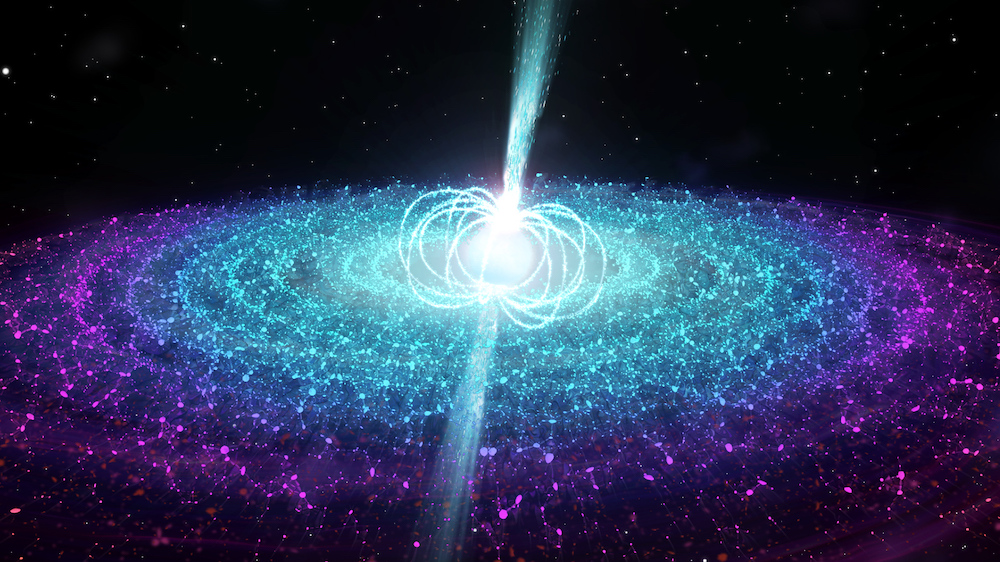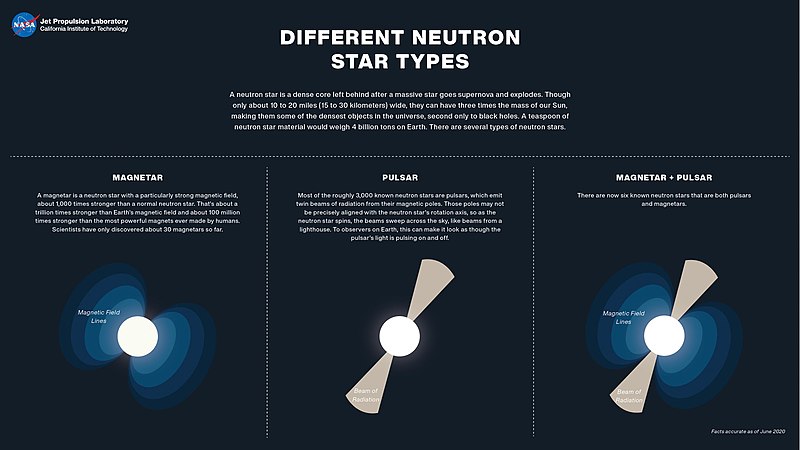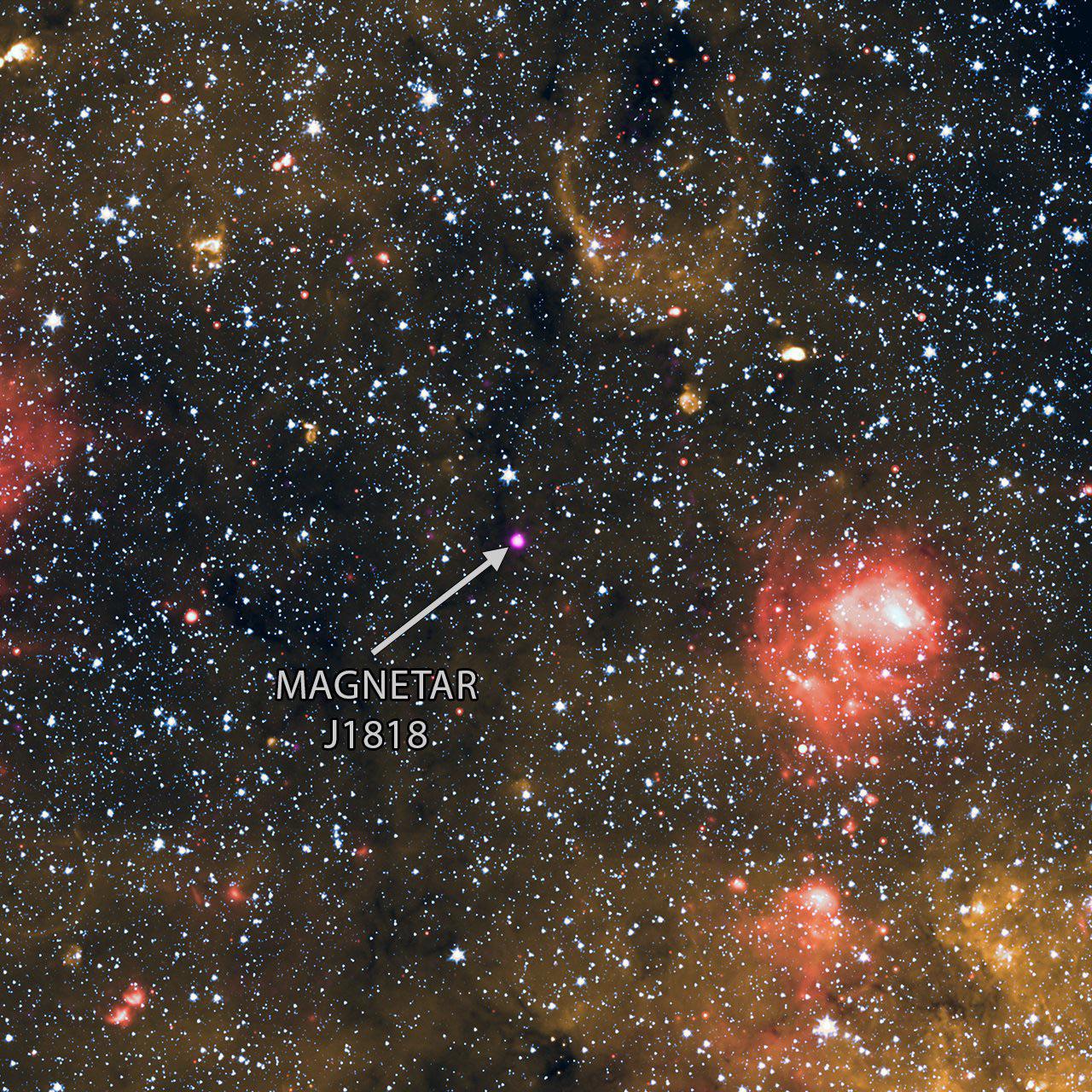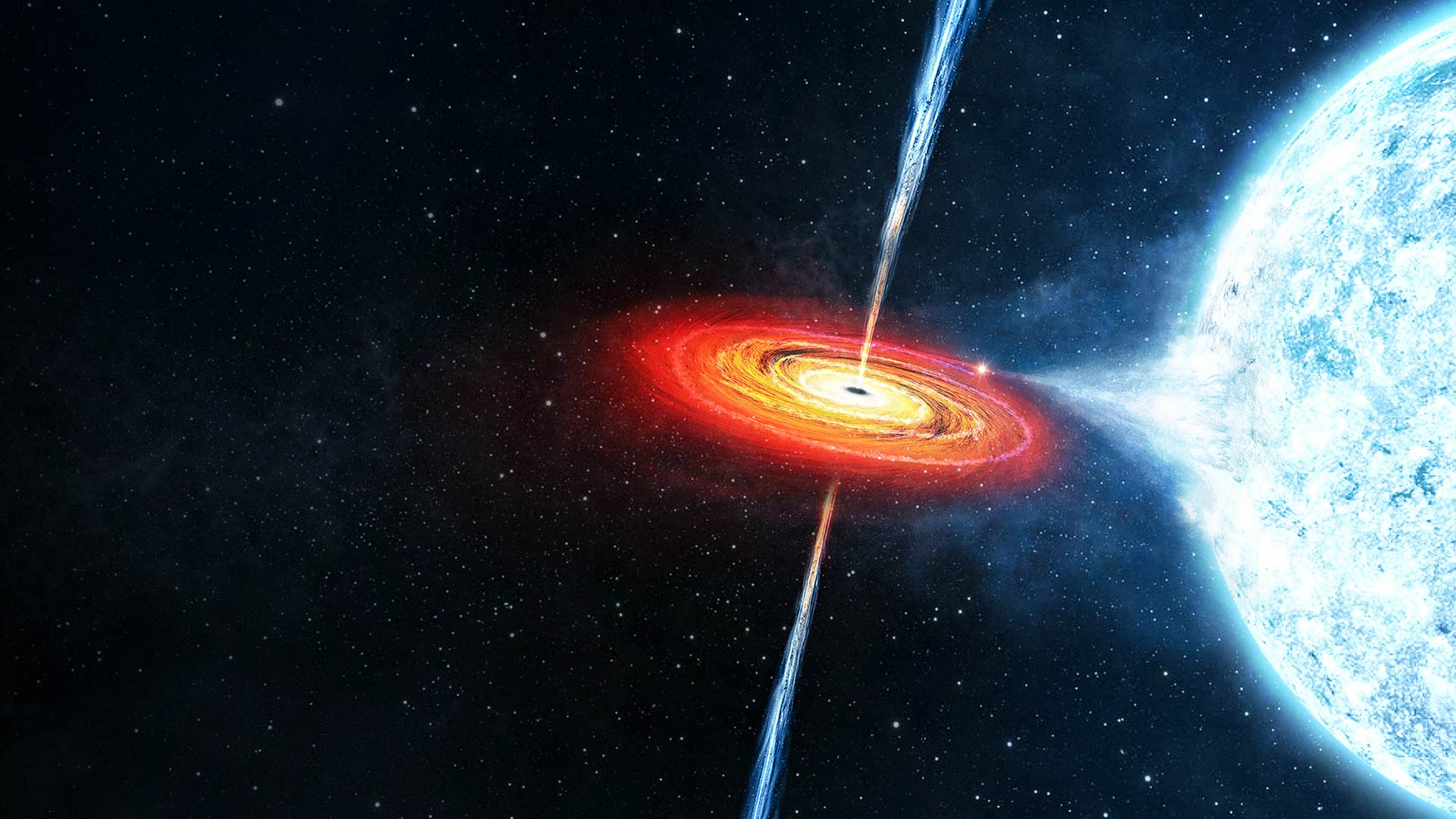

Cosmox Blogs
Magnetars: The Universe's Most Powerful Magnets
As humans, we’ve made incredible discoveries, but space remains one of the most mysterious places we’ve ever explored. It’s full of strange and fascinating things that often leave us amazed. From distant galaxies to powerful forces we can’t see, the universe is filled with wonders that challenge what we think we know. One such mind-blowing discovery is that of Magnetars.
What is Magnetars?
A Magnetar is a neutron star with a magnetic field of about 10^13 Teslas which is trillions of times the magnetic field of Earth. It is one of the rarest and most dangerous phenomena recorded by mankind. Like any other neutron star, they are relatively small sized having a diameter of about only 20km. However, the density of the interior of a magnetar is such that a tablespoon of its substance would have a mass of over 100 million tons. Magnetars are differentiated from other neutron stars by having even stronger magnetic fields, and by rotating more slowly in comparison.
Once in a while, they produce enormous eruptions of gamma rays which is the strongest nondestructive release of energy known in the universe. Scientists have now detected the most distant-known instance of one of these eruptions, called a giant flare, from a magnetar residing in a galaxy called Messier 82, or M82. This surge of gamma rays, the most energetic form of light, unleashed in just a tenth of a second the amount of energy our sun would emit in roughly 10,000 years.

Origin
When stars larger than our sun explode it leads to Neutron star formation(learn more about neutron stars from - https://www.cosmoxblog.in/post/neutron-stars). Most of the neutron stars form Pulsars which also have a terrific magnetic field. But few of the neutron stars get amplified and form something even more tremendous-The Magnetars which are almost 1000 times stronger than typical neutron stars. The exact reasons for this to occur is not confirmed, but there are several clues astronomers have found-
Rapid Rotation: When the star’s core collapses, it can spin extremely fast, up to several hundred times per second. This rapid rotation helps amplify the magnetic field.
Dynamo Effect: During the collapse, the rapid rotation combined with the movement of charged particles in the star creates a dynamo effect, which boosts the magnetic field strength to extreme levels—up to 10^15 gauss.
Discovery of Magnetars
On March 5, 1979, a few months after the successful dropping of Landers into the atmosphere of Venus, the two uncrewed Soviet space probes Venera 11 and 12, then in heliocentricorbit, were hit by a blast of gamma radiation at approximately 10:51 EST. This contact raised the radiation readings on both probes from a normal 100 counts per second to over 200,000 counts a second in only a fraction of a millisecond. It was the brightest cosmic event ever detected in gamma rays up to that point. After the initial event, astronomers observed smaller, repeated bursts of gamma rays from the same location in the following years. These repeated bursts were termed Soft Gamma Repeaters (SGRs). Unlike typical gamma-ray bursts, which occur once and fade, this event suggested the presence of a repeating, highly energetic source that could release bursts of energy over time.
In the early 1990s, it was proposed that these repeated bursts were caused by a special type of neutron star with an extremely powerful magnetic field—what we now call a Magnetar.

Magnetars near us
Scientists have confirmed the presence of 23 known magnetars. Another six are waiting for additional data to confirm if they meet the criteria to be considered magnetars. Many of these are located in the Milky Way but thankfully none of them are close to Earth.
Some of the magnetars near Earth include AXP 1E 1048-59, which is located about 9,000 light-years away in the constellation Carina; SGR 1900+14, 20,000 light-years away in Aquilla; SGR1806-20, 50,000 light-years away in Sagittarius; and SGR 0525−66, 165,000 light-years away in the Large Magellanic Cloud (just outside the Milky Way). These distances are far beyond anywhere we've explored in our galaxy.
Lifespan of Magnetars
The lifespan of the magnetar is relatively short. It can be divided into three distinct phases-
-> During the first phase the star produces intense energy waves called SGR’s Soft Gamma repeaters. The Magnetar's magnetic field gives rise to very strong and characteristic bursts of X-rays and gamma rays. The active life of a magnetar is short compared to other celestial bodies. Their strong magnetic fields decay after about 10,000 years, after which activity and strong ray emission cease.
-> Afterward, the magnetar may transition into an AXP, which is also a neutron star but with steadier, lower-energy X-ray emissions. This second stage lasts for around 30,000 to 40,000 years.
-> In its final stage, a magnetar becomes a solitary neutron star—a cool, dim neutron star that doesn’t emit much radiation and shows no evidence of a companion star nearby.
Magnetar Wind Nebulae (MWNe)
A newfound nebula surrounds a magnetar known as Swift J1834.9-0846 — J1834.9 for short which was discovered by NASA’s Swift satellite on Aug. 7, 2011, during a brief X-ray outburst.
This newfound nebulae is called Magnetar Wind nebulae. (MWNe) are like clouds of particles around a magnetar. These particles are released by the magnetar and interact with the space around it. They’re similar to pulsar wind nebulae (PWNe), which are clouds formed around pulsars (a different type of neutron star) when particles are released and interact with their surroundings. Currently, Swift J1834.9-0846 is the only Magentar with a wind Nebulae but scientists are studying more magnetars in the hope of discovering their wind Nebulae. If we could observe MWNe around magnetars, we could learn a lot about the particles coming from magnetars and how much energy they release over time. This would give scientists important clues about how magnetars behave, especially when they’re not erupting in bursts.

The most famous wind nebula, powered by a pulsar less than a thousand years old, lies at the heart of the Crab Nebula supernova remnant in the Taurus constellation. The Pulsar wind nebula has helped astronomers in various ways -
-> Composition of the wind: Observations across the electromagnetic spectrum can provide information about the composition of the wind in a pulsar wind nebula.
-> Injection history: Observations can provide information about the injection history of the pulsar that created the nebula.
-> Material the nebula is expanding into: Observations can reveal the material the nebula is expanding into, including jets, wind termination shocks, and shocked supernova ejecta.
-> Cosmic rays and neutrinos: Some models predict that pulsar wind nebulae are sources of cosmic rays and neutrinos(Neutrinos are tiny, neutral particles that are the most abundant particles with mass in the universe.
So while the scientists are still working on studying (MWNe) the contribution of (PWNe) that has helped us understand more about pulsars and wind nebulae provides hope to the aim of understanding Magnetars and their formation in a better way.
Black Holes Vs Magnetars
Black holes often dominate the headlines, but are they truly more powerful than magnetars, the strongest magnets in the universe? In terms of gravity, black holes always win—no neutron star, even the most massive, can compete with the gravitational pull of even the smallest black hole. However, when it comes to magnetism, magnetars come out on top. As astronomer Phil Plait explains, “If a stellar-mass black hole consumes something, it might release radiation, but even then, it’s unlikely to have as strong an impact across the galaxy as the 2004 magnetar event."
On December 27, 2004, a magnetar known as SGR 1806-20 unleashed a burst of gamma rays and X-rays so powerful that it affected Earth's atmosphere, despite being halfway across the galaxy. So, while a magnetar might not win in a direct contest with a black hole, its immense magnetic force is strong enough to impact Earth—making it worth paying attention whenever a magnetar makes the news.

What if there was a Magnetar near our planet?
From the above-given descriptions of this celestial body, we know how terrific it would be even if one of such objects were near us. A magnet in the Solar system would destroy all forms of life here on Earth along with all the planets of the Solar system. We would start to feel its effect when it would erase all the information present in the magnetic strips of our credit cards. If we get anymore closer to this cosmic invader atoms present in our body would get stretched out of shape and our bioelectric field would get scrambled and our bodies would just disappear.
Magnetars can even affect us from very far away. Starquakes happen when the crust of a Star cracks, releasing massive amounts of radiation into space. This blast of radiation could compress Earth's magnetic field and partially ionize the Earth’s atmosphere even from 50000 light years away. But thankfully none of the Magnetars are close enough to the Earth for these effects to take place.
Conclusion
In conclusion, magnetars are incredibly unique and powerful stars with magnetic forces that are stronger than anything else we know. With magnetic fields billions of times stronger than Earth's, they challenge our understanding of physics and space. Much of the Magnetar characteristics are unknown and they captivate not only astronomers but physicists as well. Although they are rare, studying them helps scientists learn more about how stars live and die, and about the extreme conditions in space. As we continue to explore the cosmos, magnetars and their characteristics continue to remind us about the endless and unexplored side of the universe.

Cosmox Blogs
A non profit organization that works on writing and delivering blogs on cosmology, natural sciences & environment, so that people can learn more about it. We even run a forums page, where our users interacts with each other and discuss about Cosmology, Natural Sciences & Astronomy. We even run an instagram and a youtube channel with podcasts.